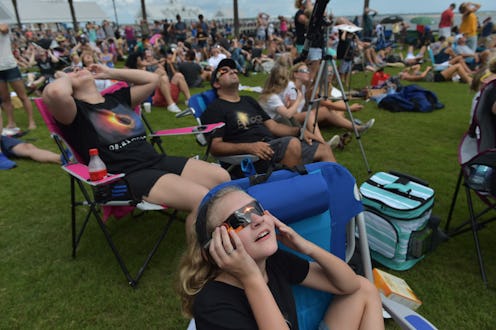
If you didn't have a chance to see the 2017 solar eclipse, relax — there's another one happening again relatively soon. Solar eclipses take place somewhat frequently, but we're not always in a place to see them. But, good news — the 2024 solar eclipse path of totality will also cross through the U.S., meaning you have a few years to figure out just how you're going to get yourself in a prime location to see it. (You also have time to get your hands on a pair of verified solar eclipse glasses before they sell out, because holy cow, those went fast this year.)
This year's total solar eclipse was especially noteworthy because it was the first time in almost 100 years that the path of totality reached all the way across the U.S., stretching from northwestern Oregon down toward Columbia, South Carolina. People within 70 miles of the eclipse's path of totality managed to snag the best view, but the eclipse was at least partially visible for everyone living in the continental U.S., making this a pretty big deal for most people.
In 2024, a total solar eclipse will once again grace the U.S. with its presence, although this time it's taking a slightly different route. According to Accuweather.com, this one will take place on April 8, and will have a path of totality that reaches upward from Texas to Maine. So get ready, East Coasters. This one is for you.
If you happen to currently reside in a city like Dallas, Indianapolis, or Buffalo, New York, maybe just make sure you don't leave in the next seven years or so, because you're perfectly in line with the 2024 path of totality, and if we learned anything from Monday's little celestial adventure, it's that solar eclipses are cool AF, y'all.
Accuweather also reports that the 2024 eclipse should be somewhat visible throughout the continental United States (sorry, Alaska), so regardless of whether or not you live in the path of totality, you get a second chance to witness this whole sun and moon dance a second time.
And, if you're really into planning ahead, there's another total solar eclipse happening in the U.S. in 2033 (this one is visible from Alaska!), and again in 2044. So whether you were stuck in the office for the 2017 eclipse, or you're just already jonesing for another one, know that you have you options. Start marking your calendar, now.